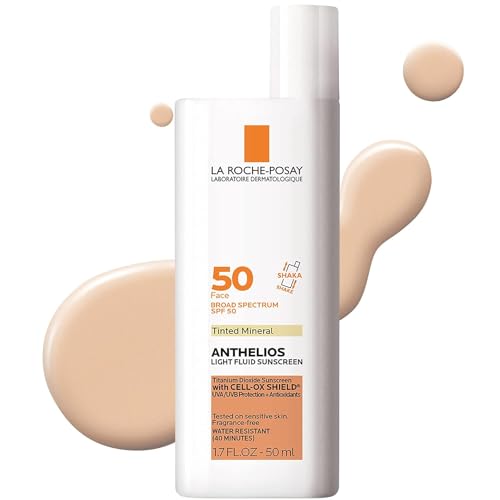As we step into the sun-soaked days of summer, the question on everyone’s lips is, “Does sunscreen prevent tanning?” The answer isn’t as straightforward as you might think. Let’s dive into the world of sunscreen, UV rays, and tanning to uncover the truth.
Understanding Sunscreen and Its Role
Sunscreen is our frontline defense against the sun’s harmful UV rays. But how does it work, and what role does it play in tanning?
More from Glowing Gorgeous: Find out here the Best Silicone-Free Moisturizers And Why Do You Care
The Science Behind Sunscreen
Sunscreen works in two ways: by absorbing or reflecting UV rays. This prevents these rays from penetrating the skin and causing damage such as sunburn, premature aging, and skin cancer.
Types of Sunscreen: Chemical vs Physical
There are two main types of sunscreen: chemical and physical. Chemical sunscreens absorb UV rays and convert them into heat, while physical sunscreens reflect the rays away from the skin. Both types play a crucial role in protecting our skin from the sun.
Before we can fully understand the relationship between sunscreen and tanning, we need to understand how the sun affects our skin.
The Impact of UV Rays
UV rays are a type of radiation emitted by the sun. Prolonged exposure to these rays can lead to skin damage, including sunburn, premature aging, and skin cancer. UV rays are also responsible for tanning.
The Process of Tanning
Tanning is your skin’s natural response to UV exposure. When UVB rays hit your skin, they stimulate the production of melanin, a pigment that darkens the skin to protect it from further damage. This is what gives you a tan.
UVA radiation, which penetrates deeper into the skin, also contributes to tanning.
Does Sunscreen Prevent Tanning?
Now, let’s address the burning question: Does sunscreen prevent tanning?
Sunscreen is designed to protect the skin from harmful ultraviolet (UV) radiation, primarily by absorbing or reflecting UV rays. While it is effective in preventing sunburns and reducing the risk of skin cancer, it does not completely block UV radiation. This means that even when wearing sunscreen, your skin can still produce melanin and tan. However, it’s important to note that any tan is a sign of skin damage.
Sunscreen with a high sun protection factor (SPF) can prolong the time it takes for UVB radiation to cause visible redness or sunburn, but it does not stop the tanning process. Similarly while most sunscreens provide broad-spectrum protection against UVA rays, they may not completely block them. As a result, the skin can still tan to some extent, even when sunscreen is applied correctly.
So, while sunscreen might not entirely prevent tanning, it does significantly contribute to safeguarding your skin from the detrimental effects of UV radiation.
More from Glowing Gorgeous: Find out here Hyram’s Recommended Face Sunscreens For The Summer
Choosing the Right Sunscreen
SPF and Its Significance
SPF, or Sun Protection Factor, indicates how well a sunscreen protects against UVB rays, the type of UV radiation that causes sunburn and contributes to skin cancer. An SPF of 30, for example, blocks about 97% of UVB rays, while an SPF of 50 blocks about 98%. However, no sunscreen can block 100% of UV rays, which is why it’s still possible to tan while wearing sunscreen.
Product Recommendations
When choosing a sunscreen, look for one that is broad-spectrum, meaning it protects against both UVA and UVB rays. Some of my personal favorites are here:
- EltaMD UV Clear Facial Sunscreen SPF 46
- Revision Skincare Intellishade TruPhysical Moisturizer SPF 45
- La Roche-Posay Anthelios Melt-In Sunscreen Milk SPF 60
EltaMD UV Clear Facial Sunscreen is a highly regarded sunscreen that offers broad-spectrum protection against both UVA and UVB rays. This lightweight formula is specifically designed for acne-prone and sensitive skin, making it suitable for a wide range of users. It contains zinc oxide and octinoxate as its key active ingredients, providing effective protection while being gentle on the skin.
The oil-free and non-comedogenic formula helps prevent breakouts and absorbs quickly, leaving a clear and matte finish. Additionally, it is enriched with niacinamide, hyaluronic acid, and antioxidant-rich vitamin E to nurture and improve the skin’s overall appearance.
Key (active) ingredients:
Zinc oxide, octinoxate, niacinamide, hyaluronic acid, vitamin E
The Revision Skincare Intellishade TruPhysical Moisturizer combines daily hydration with broad-spectrum SPF 45 protection. This multitasking product acts as a moisturizer, sunscreen, and tinted foundation, providing a natural, sheer coverage that adapts to your skin tone.
Its lightweight texture blends effortlessly and leaves a dewy finish. With a formula rich in zinc oxide and titanium dioxide, it shields the skin from UVA and UVB rays. It also contains antioxidants such as vitamin C, squalane, and coenzyme Q10, which help protect against free radicals and support the skin’s natural defenses.
Key (active) ingredients:
Zinc oxide, titanium dioxide, vitamin C, squalane, coenzyme Q10
La Roche-Posay Anthelios Melt-In Sunscreen Milk is a lightweight sunscreen with a high SPF of 60. It provides broad-spectrum UVA and UVB protection while being suitable for sensitive skin. The fast-absorbing milk texture melts into the skin without leaving a greasy residue. This sunscreen is formulated with the Cell-Ox Shield technology, combining a powerful antioxidant complex with sun filters for advanced protection against UV damage. It is water-resistant for up to 80 minutes, making it ideal for outdoor activities. The gentle formula is free from parabens, fragrance, and oxybenzone.
Key (active) ingredients: Avobenzone, homosalate, octisalate, octocrylene, ecamsule (Mexoryl SX), titanium dioxide
Additional Sun Protection Measures
While sunscreen is a crucial part of sun protection, it’s not the only measure you should take to protect your skin from the sun.
- Wearing clothing that covers your skin, along with accessories like hats and sunglasses, can provide additional protection against UV rays. Look for clothing with a high UPF (Ultraviolet Protection Factor) rating for the best protection.
- Another effective way to protect your skin from the sun is to seek shade whenever possible, especially during peak sun hours (usually between 10 a.m. and 4 p.m.), when the sun’s rays are the strongest.
- Certain foods, such as those rich in antioxidants, can help protect your skin from the inside out. These include colorful fruits and vegetables, nuts and seeds, and fatty fish.
- There are also supplements available that can boost your skin’s sun protection. However, these should not replace sunscreen or other sun protection measures, but rather be used in addition to them.
The Bottom Line
While sunscreen may not completely prevent tanning, it is essential in protecting your skin from the harmful effects of UV radiation. Remember, a tan is a sign of skin damage, not health. So, lather up, stay safe, and enjoy the sun responsibly!
Frequently Asked Questions
1. Can you tan with sunscreen?
While sunscreen can reduce the amount of UV radiation that reaches your skin, it doesn’t block it completely. Therefore, it’s still possible to tan even when wearing sunscreen.
2. Does sunblock prevent tanning?
Similar to sunscreen, sunblock can reduce but not completely prevent tanning. Sunblock tends to be more effective than sunscreen at blocking UV rays because it creates a physical barrier on the skin.
3. Does SPF 30 or 50 prevent tanning?
SPF 30 blocks about 97% of UVB rays, while SPF 50 blocks about 98%. However, no sunscreen can block 100% of UV rays, which is why it remains feasible to achieve a sun-kissed complexion despite outfitted in sunblock.


 EltaMD UV Clear Face Sunscreen, SPF 46 Oil Free Sunscreen with Zinc Oxide,...
EltaMD UV Clear Face Sunscreen, SPF 46 Oil Free Sunscreen with Zinc Oxide,... Revision Skincare Intellishade Truphysical Tinted Moisturizer SPF 45, 5-in-1...
Revision Skincare Intellishade Truphysical Tinted Moisturizer SPF 45, 5-in-1... La Roche-Posay Anthelios Melt-In Milk Body & Face Sunscreen SPF 60, Oil Free...
La Roche-Posay Anthelios Melt-In Milk Body & Face Sunscreen SPF 60, Oil Free...
 La Roche-Posay Anthelios Tinted Sunscreen SPF 50, Ultra-Light Fluid Broad...
La Roche-Posay Anthelios Tinted Sunscreen SPF 50, Ultra-Light Fluid Broad... innisfree Daily UV Defense Sunscreen Broad Spectrum SPF 36 Face Lotion, 1.69 Fl...
innisfree Daily UV Defense Sunscreen Broad Spectrum SPF 36 Face Lotion, 1.69 Fl...
Comments